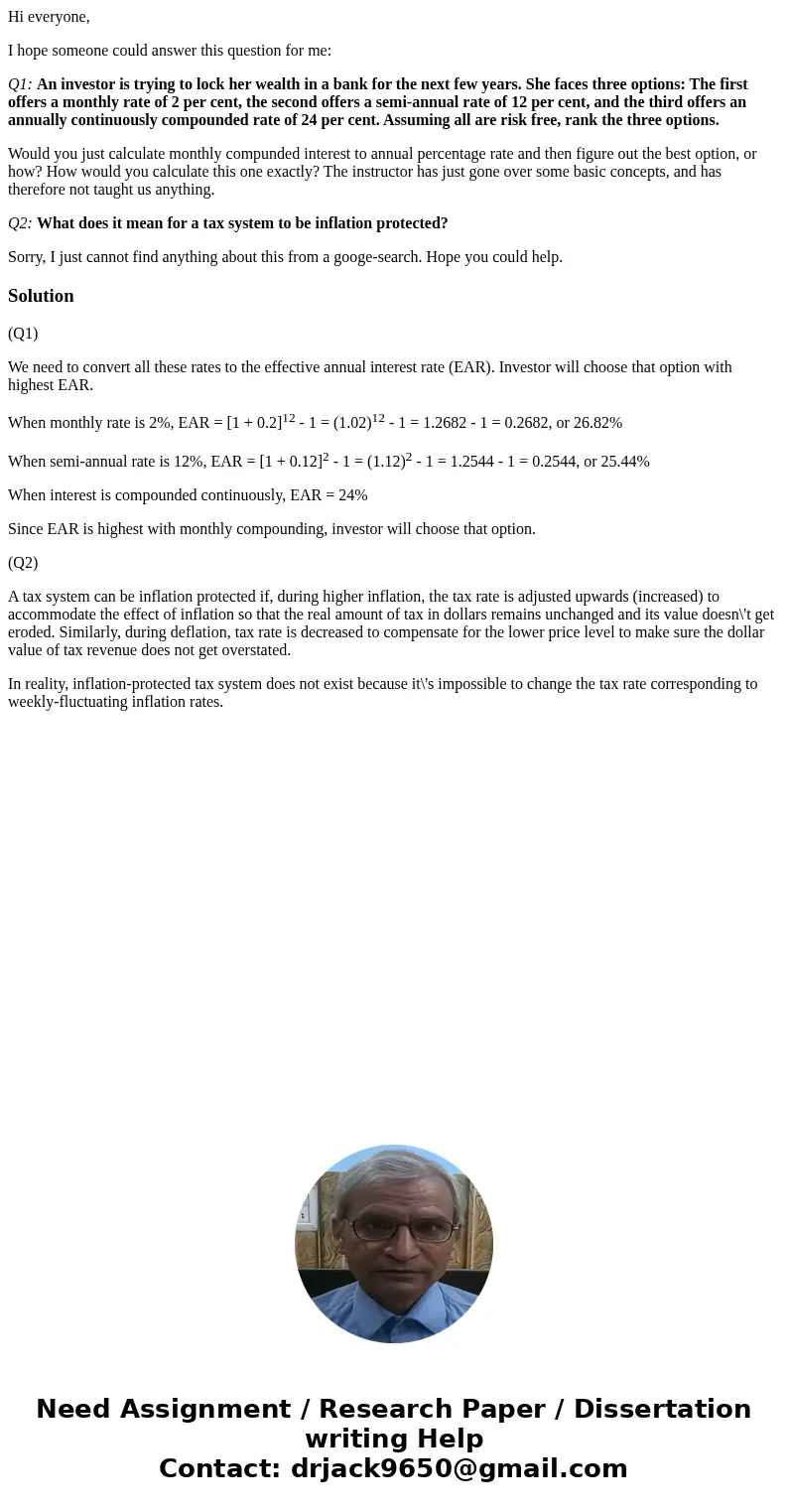Hi everyone I hope someone could answer this question for me
Hi everyone,
I hope someone could answer this question for me:
Q1: An investor is trying to lock her wealth in a bank for the next few years. She faces three options: The first offers a monthly rate of 2 per cent, the second offers a semi-annual rate of 12 per cent, and the third offers an annually continuously compounded rate of 24 per cent. Assuming all are risk free, rank the three options.
Would you just calculate monthly compunded interest to annual percentage rate and then figure out the best option, or how? How would you calculate this one exactly? The instructor has just gone over some basic concepts, and has therefore not taught us anything.
Q2: What does it mean for a tax system to be inflation protected?
Sorry, I just cannot find anything about this from a googe-search. Hope you could help.
Solution
(Q1)
We need to convert all these rates to the effective annual interest rate (EAR). Investor will choose that option with highest EAR.
When monthly rate is 2%, EAR = [1 + 0.2]12 - 1 = (1.02)12 - 1 = 1.2682 - 1 = 0.2682, or 26.82%
When semi-annual rate is 12%, EAR = [1 + 0.12]2 - 1 = (1.12)2 - 1 = 1.2544 - 1 = 0.2544, or 25.44%
When interest is compounded continuously, EAR = 24%
Since EAR is highest with monthly compounding, investor will choose that option.
(Q2)
A tax system can be inflation protected if, during higher inflation, the tax rate is adjusted upwards (increased) to accommodate the effect of inflation so that the real amount of tax in dollars remains unchanged and its value doesn\'t get eroded. Similarly, during deflation, tax rate is decreased to compensate for the lower price level to make sure the dollar value of tax revenue does not get overstated.
In reality, inflation-protected tax system does not exist because it\'s impossible to change the tax rate corresponding to weekly-fluctuating inflation rates.

 Homework Sourse
Homework Sourse